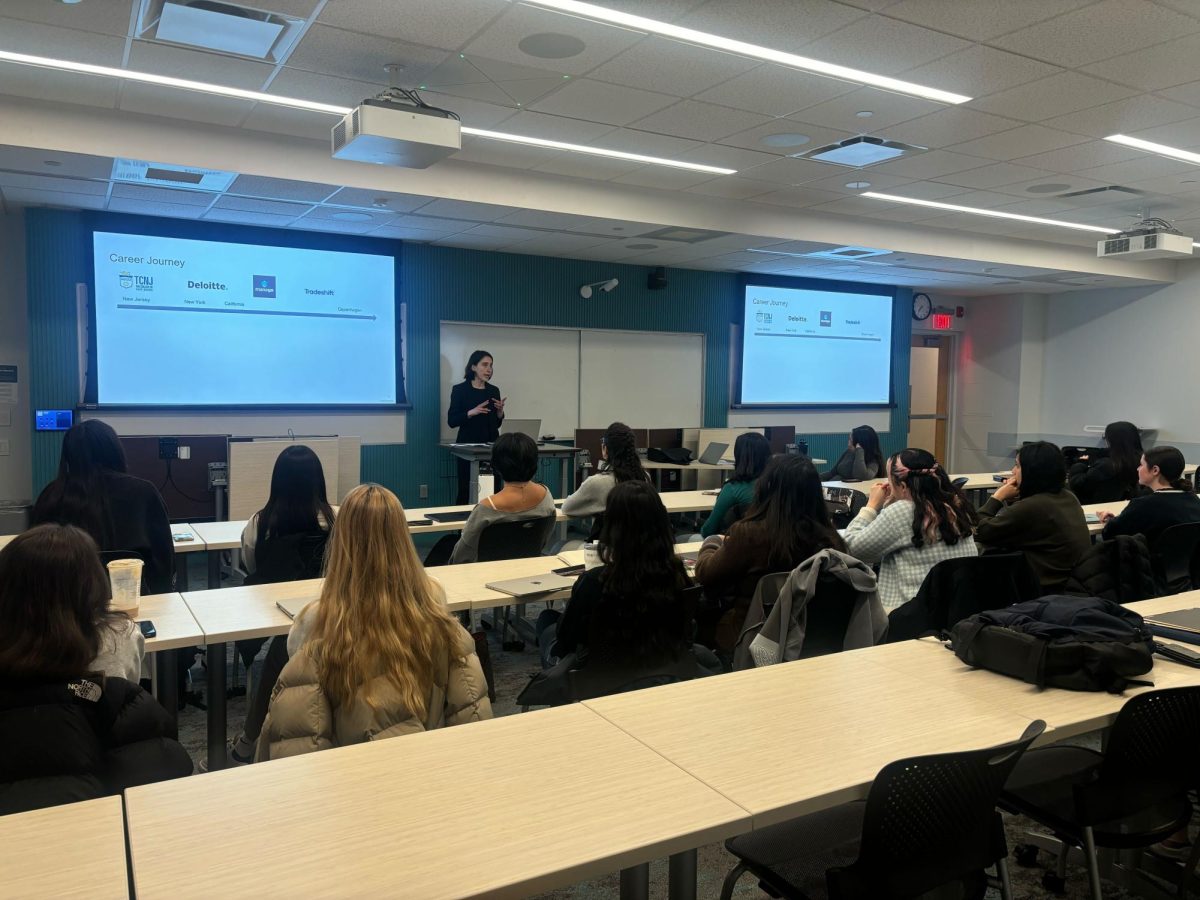By Eleni Himaras
To discuss the growing Latino-Jewish community , the Latino/a Student Cultural Center (LSCC) and Hillel came together Wed. in the McLeod Suites to host a panel discussion on the small, but growing Latino-Jewish population.
“I think that at Northeastern there’s so many different groups that don’t know each other at all,” said Hillel Director Beth Meltzer. “There’s a lot of people who are Jewish that are also Latino and wouldn’t it be nice to be able to do an event together.”
Steve Sadow, a professor of modern languages at Northeastern and moderator of the panel, supplied a brief history of how this combination of cultures came about. There are over half a million Jews living in Latin America, many of whom originally came to escape the Holocaust, he said.
The 1924 immigration and naturalization acts made it harder for fleeing Jews to go to the United States. Living conditions were also cheaper in Central and South America and it was easier to make a fresh start, Sadow said.
The event started with a combination of foods from both cultures ranging from red beans and rice to an assortment of Jewish pastries. Of the relatively small crowd, many were either Jewish or Latino who wanted to learn more about the topic.
All of the panelists had similar stories of growing up in cross-cultural households.
Ester Shapiro, a Cuban-Jewish professor at the University of Massachusetts at Boston, was born in Cuba but immigrated to Miami with her family when she was a child. Both of her grandmothers had come to Cuba to escape the Holocaust. Although her family lived in a predominately-Jewish community, she said it was impossible to avoid the street life and culture.
Once in the United States, she was encouraged to play up her Jewish heritage and down play the Cuban part of her. Despite this, she always showed her Latina background proudly.
“Nobody ever asks my Catholic-Cuban friends how they came to be so; why do they need me to prove that I am Cuban enough?” Shapiro said.
She reminded the audience that Judaism is not only a culture and a race, but also a religion. She also pointed out the strong similarities between the two cultures to show that it should not be such a stretch of the imagination to combine them.
“Both cultures have the reality of very powerful women who pay deference to men in public but know who really runs the show,” she said.
Salomon Chiquiar-Rabinovich, an attorney at Seyfarth Shaw in Boston, grew up in a tightly-isolated Jewish enclave in Mexico City. He also attended a Jewish day school. He never shied away from his Latin heritage, however. He and his family participated in all national holidays and all Jewish holidays. After attending law school in the United States, he returned to Latin America, this time to Puerto Rico.
“Even though we never celebrated Christmas, it was so much fun because you couldn’t avoid the parties in Puerto Rico,” Chiquiar-Rabinovich said.
Lihi Zabari, the Young Judaea Shlicha (emissary) for the greater Boston and New England regions, is a native of Jerusalem and though she has never lived in Latin America, both of her brothers live in Mexico. She said she was amazed to get there and hear two women talking about how it was taboo that a Jewish Mexican married a Jewish Arabic. Zabari said she did not understand why they had to differentiate the couple on background instead of seeing that they were both Jewish.
“This is the first time I’ve ever learned about the Latino-Jewish community as a whole,” said Jordyn Linsk, a freshman communications major active in Hillel. Linsk attended the discussion. “It was really interesting to see the panelists from so many different backgrounds have similar experiences.”
Luisa Pena, a middler international affairs and political science major, said she is interested in different cultures and migrating to different countries and seeing how it affects how different people live.
“I like the way the panelists came from different backgrounds but connected,” Pena said.
Though the panel focused on the intersection of Jewish and Latino/a culture, Elena Quiroz, the director of the LSCC, stressed the necessity of understanding how any culture impacts another.
“From the cultural perspective it’s very important to see how cultures interact,” Quiroz said. “It tends to bring us to our humanness.”








